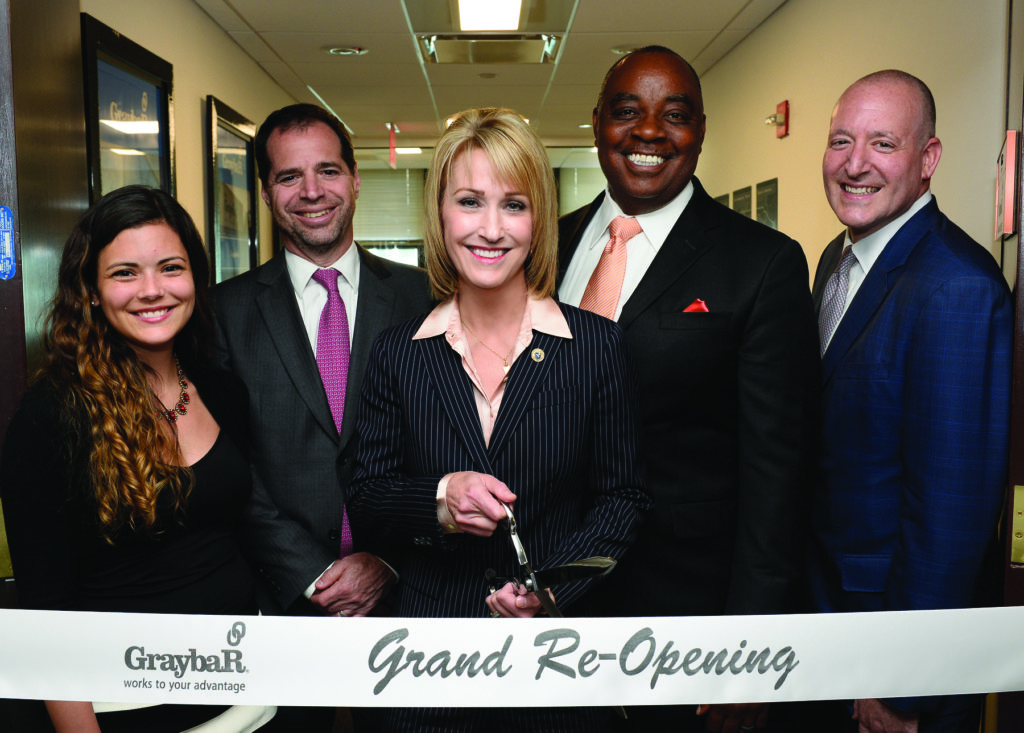Then & Now: The Graybar Building
As Graybar’s first president, Albert Salt was a one-man publicity machine, trumpeting the new company’s name to the nation. He gave speeches and sought out newspaper interviews.
Under his leadership the company spent $1 million during its first year on magazine and newspaper advertising, a substantial sum in those days.

Salt’s greatest publicity coup resonates to this day: the naming of what was then the world’s largest office building for Graybar. In 1925 Todd, Robertson & Todd—a major New York real estate firm—broke ground for a 30-story office tower at 420 Lexington Avenue next to Grand Central Terminal in midtown Manhattan.
J. Walter Thompson, the world’s biggest advertising agency, signed on as the lead tenant, taking four floors. But the Thompson firm turned down the opportunity to have the building named for it, according to the 1980 book Everybody’s Business by Milton Moskowitz, Michael Katz and Robert Levering. The firm had a strict policy of publicizing its clients, not itself, and felt that allowing its name to be put on a building would be inappropriate.
Thompson’s decision opened the door for Graybar, which had no qualms whatever about seeing its name on a building. Albert Salt knew about the building through his friendship with James Todd, a partner in the Todd-Robertson firm. Both men lived in New Jersey and sometimes sat together on the morning train to New York.
In May 1926, as the steel framework was being erected, Graybar and Todd-Robertson worked out a deal. Graybar signed a nineteen-year lease for a portion of one floor and bought some of the bonds that were being sold to finance the building. In return, Todd-Robertson named the tower the Graybar Building.
Newspapers across the nation wrote about the deal. “World’s Largest Office Building To Be the Graybar,” a headline in the Davenport, Iowa, Democrat and Leader declared. (Although some buildings were taller, none was bigger in terms of square feet of office space.) The New York Times noted that 12,000 people would work in the Graybar Building and compared it to a “small city.” The Oakland, California, Tribune quoted William Berry, the local Graybar manager, as saying (probably from a press release rather than an interview, given the stilted language), “It is singularly apropos that the Graybar Electric Company, conceded to be the largest electrical merchandising company in the country, should have for its executive offices a building of its own name and one which in turn enjoys the unique distinction of being the largest edifice of its kind. It is noteworthy, in addition, as indicative of the spirit of progressiveness prevailing, that such a distinction comes to a company after such a short period of corporate existence under its own name.”
Being associated with the world’s largest office building lent prestige to the Graybar name, and the Graybar name—which Graybar Electric was advertising heavily at that time—gave glamour to the building. It was a perfect symbiotic relationship. Salt was in his glory. In October 1926, speaking at a ceremony when the final steel beam was hoisted into place, he said the Graybar Building would “stand for generations as a living symbol of 20th-century progress.”
J. Walter Thompson eventually leased seven floors. Graybar never leased more than one.
From 1927 until 1982, the 17th floor of the Graybar Building served as company headquarters. Even after Graybar moved west to St. Louis, the company was so closely associated with the building that the owners decided to keep the name — another publicity coup for Graybar.
And on June 16, 2015, some 33 years after leaving the Graybar Building – Graybar returned home.

Graybar held a grand opening celebration to christen the newest sales office in the company’s ever-growing list of locations — this time on the 25th floor of the building still bearing the company’s name.
What makes the Graybar Building even more interesting is the company history that is on display in the lobby. The Graybar corporate logo is over the front door, and two bronze plaques in the lobby tell the story of Elisha Gray and Enos Barton. The current owner, SL Green Realty Corporation, has even installed a display in the lobby recounting the history of Graybar to explain the origins of the building’s name.
Graybar’s return to the Graybar Building received considerable attention in Manhattan, as the New York Post as well as other local and industry publications applauded the move by Graybar.
And while Graybar has changed dramatically since it was last in the Graybar Building, many aspects of the business remain the same.
“At the end of the day, our business is about helping our customers be successful,” said Chairman, President and CEO Kathy Mazzarella. “Good and genuine customer service never grows old. It’s timeless. Just like the Graybar Building.”
When it came to getting name recognition for Graybar, Albert Salt knew exactly what he was doing.



